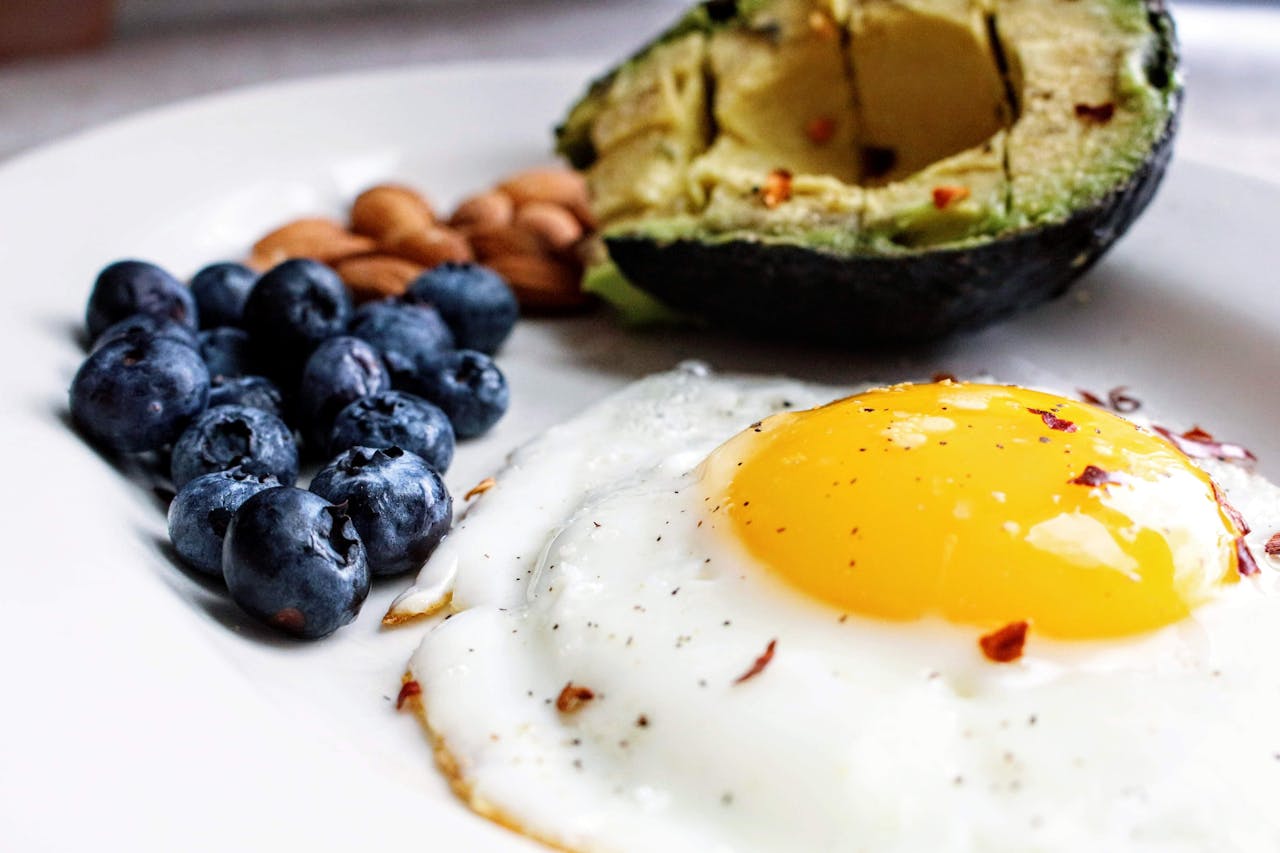Why this isn’t just a Swiss question
America adores shortcuts: same-day delivery, one-tap rides, and lately a weekly shot that makes the snack cabinet look boring. Wegovy, Ozempic and Zepbound— GLP-1s —work because they quiet hunger and slow gastric emptying. But the U.S. problem isn’t losing weight; it’s keeping it off when the subscription ends, the insurer blinks, or the side effects stop being cute. If you’re on a fitness site, you don’t want a morality play; you want a plan that keeps the scale honest while your life stays human.
The uncomfortable baseline: stopping tends to rewind progress
In long-running trials and real-world claims, discontinuation often brings weight back like a boomerang. The STEP-1 extension on semaglutide showed participants regained much of what they lost after withdrawal, and tirzepatide’s SURMOUNT-4 withdrawal arm echoed the theme.
Translation: obesity behaves like a chronic disease; stopping the drug is not like taking off a cast—it’s more like ignoring your blood pressure forever and hoping vibes carry you. That doesn’t mean you must stay on medication for life, but it does mean you need a grown-up off-ramp, not a leap of faith. See also our article: Weight Loss: Ozempic , Mounjaro
The U.S. twist: cost curves and coverage roulette
Here’s the thing Europe doesn’t feel as sharply: the American wallet. Out-of-pocket can hover in the four figures per month, coverage rules change mid-year, and pharmacies sometimes turn into scavenger hunts. Predictably, adherence drops with sticker shock. The cultural side effect? People start stretching doses, spacing injections, or dabbling in compounded versions because TikTok said it’s “the same.” Spoiler: your pancreas didn’t sign off on that plan.
Fitness reality check: hunger is chemistry, but muscle is behavior
GLP-1s don’t just trim cravings; they also trim calories. If you lift less and eat too little protein, some of the “weight loss” will be muscle you actually needed. Muscle is your glucose sink, your fall-prevention plan at 60, and the reason your metabolism doesn’t sulk. Whether you stay on a GLP-1, taper, or stop, resistance training three to four times weekly and a deliberate protein target (think 1.6–2.0 g/kg/d for active adults unless your clinician says otherwise) keeps your weight loss from becoming a strength loss. That isn’t bodybuilder advice; that’s longevity math.
Media hype vs. human physiology
American media loves a redemption arc: “I took a shot and my life changed.” Great for views, rough for expectations. The less glamorous story is that behavior doesn’t uninstall just because appetite quiets down. Environments push back—office snacks, late-night stress, celebratory weekends. If you want a durable result, you design a boringly effective environment: grocery lists that assume future you will be tired, a training schedule that survives business travel, and a social script for saying “no thanks” without sounding like a sermon. The shot can help, but it can’t babysit your calendar.
What “tapering” really buys you
Clinicians increasingly frame GLP-1s like antihypertensives: long-term therapies for a chronic condition, with tapering as a clinical experiment—not a guarantee. A thoughtful taper inserts guardrails before the dose drops: protein up, step count up, ironclad lifting days, and an accountability loop with a coach or clinician. It’s also the moment to tackle trigger patterns you postponed while the drug did the heavy lifting. If your plan for stress was “I’ll just be less stressed,” that’s not a plan; that’s a wish. Anchor new habits while pharmacologic appetite is still somewhat present, then test lower doses.
Training on GLP-1s: performance truths no one tells you
If your long runs feel flat or your lifts stall, it might be the calorie gap, not your character. Appetite suppression can sneak your intake below performance needs. Athletes on GLP-1s often do better with strategic carbs around training sessions and a shake-level solution for protein on low-appetite days. Hydration and electrolytes matter more when gastric emptying is slower; chasing PRs with a half-empty tank is not grit—it’s a preventable plateau.
Operations, anesthesia, and the “do I stop before surgery?” debate
Earlier guidance leaned toward holding GLP-1s before procedures because of delayed gastric emptying. More recent multi-society guidance suggests many patients can continue with risk-stratified adjustments. What matters to you: tell your surgical and anesthesia team you’re on a GLP-1, describe any GI symptoms honestly, and follow their specific protocol. There is no heroism in pretending your stomach empties on a stopwatch.
How to build an off-ramp that doesn’t boomerang
If you’re determined to stop, act like a strength coach writing a taper plan. First, commit to resistance training as a non-negotiable anchor—the kind you would schedule like meetings you can’t miss. Second, install protein defaults: ready-to-drink options, pre-cooked lean proteins, and one “always in the fridge” carb you tolerate well after training. Third, rehearse social friction:
How you’ll handle family food push, client dinners, or the airport. Fourth, monitor weekly, not yearly: body weight, waist, resting heart rate (HR), training loads, and how your hunger feels at predictable times. Fifth, accept that a maintenance micro-dose might be your long-term solution—and that’s okay. The goal is a stable life, not a pharmaceutical purity test.
Numbers, not vibes: cost and sustainability, side-by-side
Let’s set the emotional arguments down for one minute and look at sustainability like an operations problem. Medications can be worth every dollar if they reduce disease burden, enable training, and keep hunger humane. Training is worth every minute if it preserves lean mass, insulin sensitivity, and mood. The win is not drug versus gym; it’s drug plus gym when needed—and gym forever either way.
| Dimension | GLP-1 (long-term use) | Training & Nutrition |
|---|---|---|
| Primary effect | Appetite reduction, slower gastric emptying | Energy expenditure, muscle preservation, metabolic flexibility |
| Sustainability if stopped | Weight regain common without plan | Habits persist; effects compound with time |
| Muscle impact | Risk of lean mass loss if protein/training inadequate | Preserves/expands lean mass; supports healthy aging |
| Monthly cost (U.S., illustrative) | High if not covered; variable with insurance | Low to moderate (gym/coaching/food quality) |
| Behavior change | Helpful but not sufficient alone | Required for durable outcomes |
Show me the money: a plain-English comparison
Every dollar you spend should protect future you. For many, GLP-1s unlock momentum: joints hurt less, stairs feel normal, blood markers improve. That momentum is priceless—if you use it to build a training identity that survives the copay drama. Think in multi-year horizons: if you can sustain medication, great; if you can’t, your muscle, sleep, steps, and food environment must carry the torch without complaint.
| Scenario | Year-1 Focus | Year-2+ Reality |
|---|---|---|
| Medication only | Weight down fast; appetite quieter | If stopped, regain risk spikes; if continued, budget/coverage must hold |
| Training only | Slower scale change; strength and energy up | Compounding benefits; still hard if hunger biology is fierce |
| Medication + Training | Best early momentum; lean mass protected | Feasible long-term if either the medication continues or taper is coached |
The culture war you can ignore
Two loud camps will yell at you: “Just work harder” and “Just get the shot.” Both are wrong because both are performative. You are not a slogan; you are a system. Systems win with redundancy: multiple levers that protect the outcome when one fails. Meds and muscles can be teammates. If you must bench one, train the other twice as smart.
Practical playbook for the next 90 days
Lock in three lifts per week with progressive overload you can track. Build a boring breakfast that hits protein without thought. Place carbs where your training lives—not where your stress screams. Grocery shop when you’re full, not heroic. Sleep like your appetite depends on it (because it does). Get a coach if your calendar eats you. If tapering, treat each dose drop as a mini-season: adjust protein, training volume, and social scripts ahead of time—not after hunger knocks.
What about surgery?
Do not crowdsource anesthesia guidance. Be transparent with your team about GLP-1 use and GI symptoms; many patients can continue under updated guidance, but some will be asked to adjust. The point is safety, not ideology. Your six-month deadlift goal can wait a week; your aspiration pneumonia cannot.
Where this leaves us
GLP-1s changed the game; they did not end it. If you keep them, earn the extra years by training like it matters. If you leave them, replace the pharmacology with structure so tight it feels like cheating. Either way, the finish line isn’t a number on a box of pens. It’s the morning you wake up, look at your calendar, and realize your habits are now the easy choice.
Sources and further reading
[1] Wilding JPH et al. “Weight regain and cardiometabolic effects after withdrawal of semaglutide: STEP-1 extension.” Diabetes Obesity and Metabolism, 2022. [2] Aronne LJ et al. “Continued Treatment With Tirzepatide for Maintenance of Weight Reduction: SURMOUNT-4.” JAMA, 2024 (trial completed 2023). [3] Reuters analysis of persistence on Wegovy/Ozempic in U.S. claims data, July 10, 2024; update June 25, 2025. [4] AP News coverage on long-term nature of GLP-1 therapy, 2024. [5] American Society of Anesthesiologists & multi-society clinical guidance on GLP-1 use before procedures, 2024. These sources support the statements on weight regain after discontinuation, real-world persistence, and peri-operative considerations.













